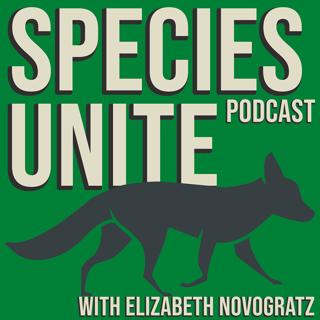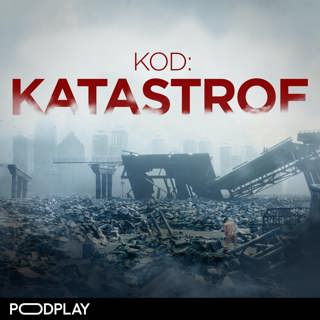
Tim Harrison: Lions, Tigers, and Bears… and Wolves, Pythons, Cougars, Alligators, and Sloths Living in America's Basements and Backyards
In neighborhoods all over the United States, there are homes with large predators, venomous snakes, and wild animals from every country on the planet. The desire to own and "master" some of the worlds most dangerous creatures, from lions to wolves to pit vipers, started to boom in the 90s – mostly because of reality TV. It's big business and it's very legal in many parts of the country. Not only is it incredibly dangerous for humans – the owners as well as the first responders who get the call when something goes amiss; but, it's also cruel and leads to a miserable existence for the animals. No wild animal is better off living in some ones backyard, basement, or living room. There have been numerous situations where things have gone awry, situations like Travis the Chimp in Connecticut and the tragedy in Zanesville, Ohio where Terry Thompson turned 56 predators loose on the city and all of the animals were killed. Tim Harrison is a retired Ohio police officer, fire fighter, and paramedic and he is a leading specialist when it comes to dealing with the exotic pet trade. He has been fighting to get these animals out of people's homes and into sanctuaries for over 40 years. He started out on what he calls "the dark side" of the trade. He owned lions and wolves and a menagerie of wild pets (that he'd rescued from the trade) until he made a trip to Africa and saw what wild animals in the wild looked and behaved like. Ever since, he's been leading the mission to change the laws and get these animals to safe and sane environments. Tim is also the director of Outreach for Animals and he was the subject of the documentary, The Elephant in the Living Room – an award winning film made by Michael Webber that explores this growing trend of people owning dangerous exotics as pets. Only after I saw it did I understand just how terrifying and incredibly sad the American exotic pet trade is. It's something that shouldn't exist in the first place but until the laws change and more people get on board, wild animals will continue to be trafficked and live in small cages in suburbia. If you haven't seen it, watch it. You will be floored. Tim's stories of fighting this trade while rescuing hundreds of animals are absolutely incredible. He and I met a few weeks ago in Ohio and he shared quite a few of them. Please listen to this episode and then, get behind the Big Cat Public Safety Act and help get these animals out of the trade.
23 Jan 202031min

Sharon Guynup: The United States Has A Tiger Problem
There is a tiger problem in the USA. There are more tigers in captivity in the US then exist in the wild. The number of American tigers lies somewhere between five and ten thousand. We don't know the actual number because they mostly go unregulated. Sadly, most of these tigers live in cages in private homes, backyards, garages, or in cages in roadside zoos. Many of them are inbred, malnourished, and sick. There is absolutely no reason that this should be the fates of one of the most majestic creatures on the planet. What have we done? And, why are we still allowing it? Journalist and author, Sharon Guynup and photographer, Steve Winter spent two years investigating these questions for a story called, The Tiger Next Door, for December's issue of National Geographic. If you haven't read it, read it. Sharon's story is astounding. It involves the criminal underworld, wildlife trafficking, murder, and thousands of captive tigers living sad pathetic lives all over the USA. America has a serious problem with captive wildlife, and what we've done to tigers is cruel, dangerous, and absolutely unnecessary. Sharon is a hero for tigers. She has been reporting on them for years, mostly tigers in the wild, until 2016, when her investigation into the famed Thai Tiger Temple for National Geographic published strong allegations of illegal wildlife trade, causing Thai officials to confiscate the 147 tigers living at the temple and shut the operation down. Sharon and I met in New York in December to talk about her story. The two-year investigation that she and Steve Winter did is mind blowing and absolutely devastating for anyone who cares about wild animals. There are ways to combat this crisis right now. The first is to not participate in any wildlife tourism that includes selfies with wildlife or any type of handling of wild animals, and the second is to get behind and support The Big Cat Safety Act.
16 Jan 202040min

Allison Argo: On Passion, Purpose, and the Wisdom of Following Your Heart
If you were to take a brief look into Allison Argo's life, you'd see the definition of what it means to follow your passion - written in large neon letters. She grew up in the theater on Cape Cod and as soon as she was old enough and able, she moved to NYC with a hundred bucks in her pocket ready to pursue her dream of acting. She walked dogs and cleaned apartments until she landed on her first role on Broadway. After acting in a few Broadway productions, she moved to Los Angeles and had another successful career on television. But her real life's work didn't begin until she left acting. In 1990, without having any idea as to what she was doing she made her first documentary, The Urban Gorilla. She wrote, directed, produced, and edited it – learning all of the above on the job. It was picked up by National Geographic and was nominated for two Emmy's. She's gone on to make another 18 films and has won six Emmy's and scores of other awards. Her documentaries focus on animal welfare, endangered wildlife and conservation. They have brought awareness and change to the plights of many species around the globe, including: gorillas, chimpanzees, snakes, dogs, elephants, and most recently, pigs. The Last Pig is Allison's documentary about a pig farmer named Bob Comis and his final year of sending his pigs to slaughter. It's an incredibly beautiful, meditative film, narrated by Bob, while he struggles with the monthly trips to the slaughterhouse, ending the short lives of the pigs that he has grown to love.
19 Dec 201936min

Jo-Anne McArthur: What We Can't Unsee
Jo-Anne McArthur is an award winning photojournalist and the founder of We Animals Media. For 20 years she has been photographing and bearing witness to our complex relationship with animals. She's worked in over 60 countries in just about every industry one can imagine - including: fur farms, factory farms, bear bile farms, zoos, rodeos, circuses, and marine parks with the mission to make the lives of these invisible animals visible. Her images tell the stories of unseen suffering, the stories of what happens when we stop paying attention, of what hopelessness looks like, and of thousands of little lives that would have otherwise gone unnoticed. She is also co-founder of the Unbound Project and the author of two books, We Animals and Captive. And, she was the subject of Liz Marshall's acclaimed documentary, The Ghosts in Our Machine.
12 Dec 201936min

Natasha Daly: Shedding Light on the Dark Reality of Wildlife Tourism
Natasha Daly is a writer and editor at National Geographic where she covers animal welfare, exploitation, and conservation. She wrote National Geographic's June cover story, Suffering Unseen, the Dark Truth Behind Wildlife Tourism. If you haven't read it yet, read it. It is the story of the bleak reality that is daily life for so many captive wild animals, including: elephants, tigers, sloths, dolphins, whales, even polar bears. And, it's the story of why so many wild animals are living miserable and often painful existences. The answer is, us. Well… us and social media – which is also us. Animal related activities that we often associate with travel and global tourism, activities like bathing elephants in Thailand or taking selfies with sloths in South America, have become social norms and even rites of passage when it comes to taking off to see the world with a backpack or on holiday or honeymoon. And that is because of social media. Yes, people were doing these things pre-internet, but the numbers didn't compare. We see friends or celebrities swimming with dolphins or holding baby tigers in their Instagram feeds and it looks innocent, harmless and fun and all of a sudden, there's one more thing to add to the bucket list. But the truth is a different story. The truth involves a lot of pain and a lot suffering behind the scenes. Natasha and photographer, Kirsten Luce spent a year on four continents investigating this story, and what they learned and reported will astonish you.
5 Dec 201935min

Barbara King: Animals Grieve, Mourn, and Love
Many of us who have animals in our lives know that they experience emotion, we know because we've seen it. We've witnessed our dogs express joy when we walk through the door, watched them display jealousy toward another animal, or we've seen them mourn the loss of a companion. When someone asks, "how do we know?" usually, most of us say something along the lines of, "we just know... it's obvious." But, that's not how it works in science. Science needs proof and for too many years proof wasn't an option, as a large majority of the scientific community avoided any research or any studying of the inner lives of animals, classifying the entire idea that they even have inner lives as anthropomorphic. Fortunately, for many species, science has started to come around. Research and studies are expanding every year and scientific circles have become increasingly accepting and supportive of the idea that many species do indeed have emotions. Barbara King is a biological anthropologist who has studied the complex emotions throughout the animal kingdom – from orcas to elephants to ducks to dogs, with a focus on grief and love. Her work is centered on how the science of animal thinking and feeling can help us better understand and advocate for the rights of animals. The more that humans know about animal's intelligence and emotional lives, the harder it becomes to harm them. Barbara is an emerita professor of anthropology at the College of William and Mary and the author of several books, including How Animals Grieve and Personalities on the Plate. Her books are loaded with impassioned stories of animal's emotional lives and inner worlds, all backed with the scientific rigor that builds the case toward changing the way in which the world treats animals. She also gave an incredible TED talk this year, which has already been seen by a million and a half people.
21 Nov 201933min

Beverly and Dereck Joubert: Are We Being the Best Version of Ourselves?
Are we being the best version of ourselves? That's a question that Beverly and Dereck Joubert asked quite often during this conversation and also one that they seem to live by. It's embedded into their work, their lives, their relationships - with each other, the wilderness, and the planet; as if the question floats above their heads as a gentle reminder of who they want to be in the world. And, the continual asking of that question shows in everything that they do, fight for, love, and are actively trying to save. They are award-winning filmmakers, National Geographic Explorers-in-Residence, and wildlife conservationists who have made over 30 films while researching, exploring, and doing vital conservation work throughout Africa for nearly four decades. They also happen to have what could possibly be the best love story of our time. They have been together for nearly 40 years and the great majority of it has been spent living in the bush in Botswana, making films, doing research, and fighting to save what's left of the African wilderness and the large predators who inhabit it. For months and years at a time they've lived without electricity, without much human interaction, without many comforts, nor personal space – things that most couples have a difficult time managing over a week long glamping trip. They've been doing it for 38 years. Living in the bush for decades has included many death defying close calls, including what they simply refer to as the "incident" with a wounded (therefore angry) cape buffalo that nearly ended it all. Fortunately, everyone survived and after an 8 month stint in the hospital for Beverly, they returned to the bush and began filming again – at the exact place where the attack occurred. Did I mention that they are a little tougher than most of us? Their love story, like all of the good ones, is about something much bigger than themselves. It's a story about Africa, the wilderness, the wild animals who live there, and it's about fighting the biggest fight of our time, to save what's left of this majestic planet. In the last 50 years, Africa has lost 90 to 95 percent of its large predators. We could very well witness the end of wild lions, cheetahs and other big cats in a decade or two. It's that urgent and we are in that much trouble. If we want to live in a world with lions and leopards and elephants and rhinos, then we've got to get behind those who are out there on the front lines. Beverly and Dereck are not only out there, but they've documented it for decades, so that we can see and understand the African wilderness in all of its magnificent glory and so that we know exactly what's at stake, what we are about to lose. Their most recent film was released in October. It's a three part series called: Okavango, A River of Dreams. It's a heartbreakingly beautiful journey through the place they've called home since the beginning.
13 Nov 201943min

Shannon Keith: Hope for Thousands of Beagles Used in Laboratory Experiments
In the United States we still use millions of animals in laboratory experiments. It's a secretive industry and I think, many people are under the impression that it ended years ago. Not only is it still huge, but we test on just about every type of animal one can imagine, including dogs. 70,000 dogs a year are used in laboratory experiments and a great majority of them are beagles. The heartbreaking reason that beagles are so often the dog of choice is because they're docile, sweet, trusting, and they don't fight back. Like all laboratory animals, their lives are miserable from the time they are born until they're euthanized. They are taken from their mothers and are subjected to horrific cruelty, painful tests, torture, and then finally, when the experiment is over, they are killed. Shannon Keith is a superhuman. She's the founder of Beagle Freedom Project, an organization that rescues and advocates for beagles as well as for many other animals who are tested on in laboratory experiments. She's is also an animal rights lawyer, activist, and documentary director/producer. She has changed laws, rescued thousands of animals, brought enormous amounts of attention and awareness to issues that have been kept secret for decades, and in her spare time, she's made three documentaries that have exposed the hidden worlds of lab testing, the fur industry, and the lives of captive primates. I'm certain that future generations will look back on what we're currently doing to animals with shock and horror, but they'll also be able to see that there were indeed heroes amongst us: those who gave all to battle against the incredible injustices and atrocities that so many animals face every single day. Shannon is one of the heroes. Thousands of animals are alive, safe, and free because she refuses to give up the fight.
1 Aug 201938min





















